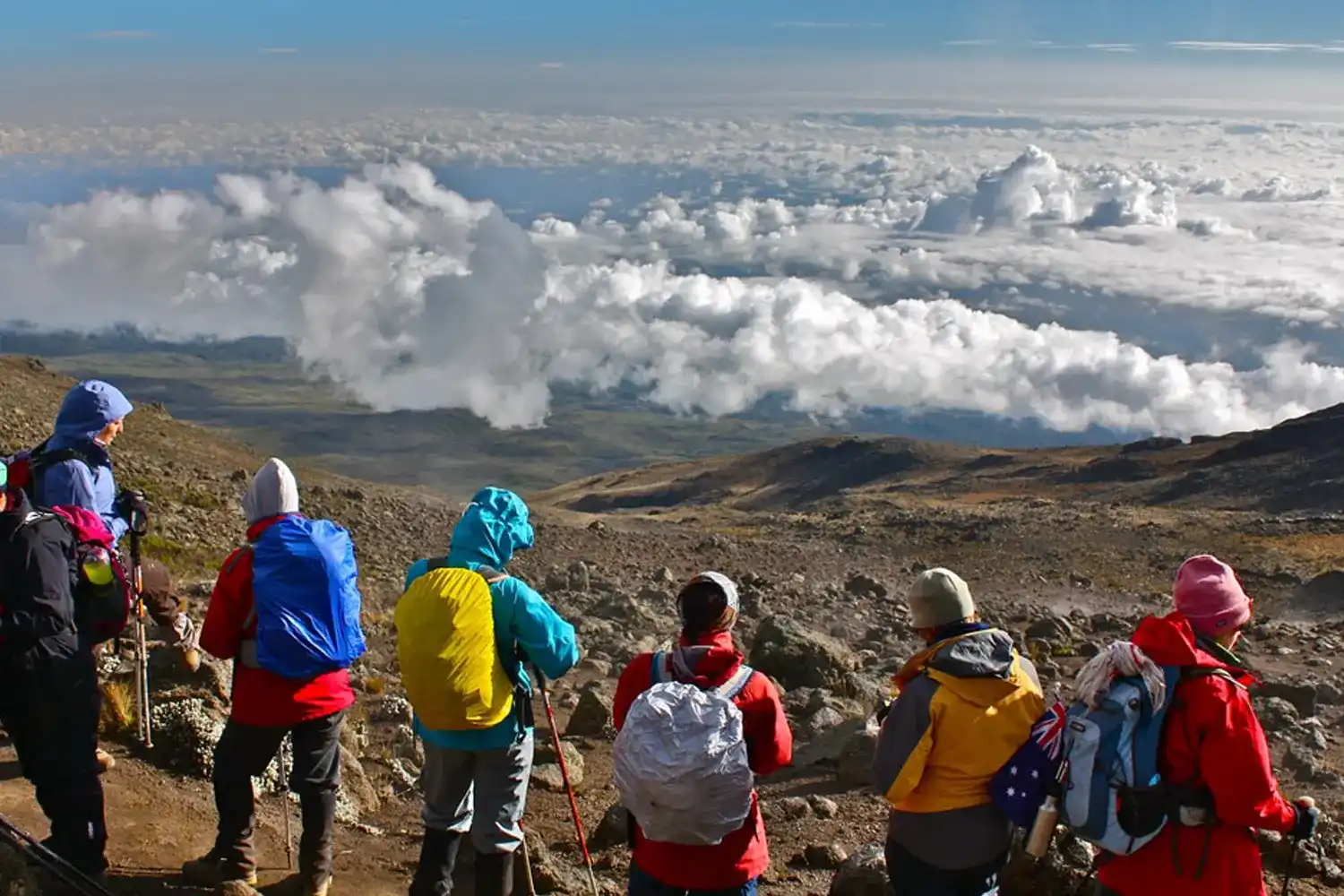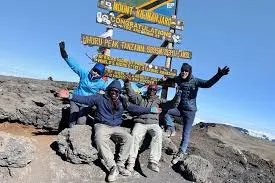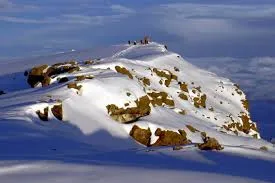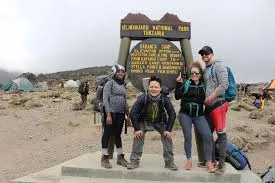Tips for a Successful Kilimanjaro Climb
Climbing Mount Kilimanjaro requires preparation, endurance, and the right mindset. Success depends on proper training, pacing, and equipping yourself with the right gear. Staying hydrated, fueling your body, and choosing the right route will also make a big difference. This guide provides essential tips to help you maximize your chances of a safe and rewarding summit with Capable Africa Tours.
Plan Your Kilimanjaro Trek Now
Essential Tips for a Successful Kilimanjaro Climb
Climbing Kilimanjaro successfully requires preparation, the right gear, and a focused mindset. Taking time to train, pacing yourself on the trail, and allowing for proper acclimatization greatly improve your chances of reaching the summit. Partnering with an experienced trekking company also adds to your safety and support. Here are the most essential tips to help you prepare for a 6–9 day Kilimanjaro trek with Capable Africa Tours.
1. Train Smart for Physical Endurance
Start training 3–6 months before your climb. Kilimanjaro’s trails require stamina, strength, and mental toughness. Focus on:
- Cardio: Run, cycle, or swim 3–4 times weekly (45–60 minutes) to boost endurance.
- Strength Training: Target legs and core with squats, lunges, and planks (3 sets of 12–15 reps).
- Hiking Practice: Do 4–6 hour hikes with a 5–7kg daypack to mimic trek conditions.
- Altitude Simulation: If possible, train at elevation or use a gym’s altitude training equipment.
A 2019 study showed climbers who trained for 3+ months had a 20% higher summit success rate (78% vs. 58%).
2. Choose the Right Route
Kilimanjaro has seven routes, each with unique challenges and benefits. Capable Africa Tours recommends longer routes for better acclimatization:
| Route | Duration | Success Rate | Difficulty | Best For |
|---|---|---|---|---|
| Machame | 6–7 days | 80–85% | Moderate | Scenic views, good acclimatization |
| Lemosho | 7–8 days | 85–90% | Moderate | Longer, quieter, high success |
| Marangu | 5–6 days | 60–70% | Easy | Beginners, hut-based |
| Rongai | 6–7 days | 70–80% | Moderate | Drier, less crowded |
Tip: Opt for a 7–8 day route like Lemosho for a 15–20% higher summit success rate due to better acclimatization.
3. Master Acclimatization
Altitude sickness is a top reason for failed summits. To minimize risk:
- Pole, Pole: Follow the Swahili phrase “pole, pole” (slowly, slowly) to pace yourself.
- Hydrate: Drink 3–4 liters of water daily to support oxygen delivery.
- Medication: Consult your doctor about Diamox (125–250mg daily) to prevent altitude sickness.
- Climb High, Sleep Low: Longer routes incorporate this strategy to aid acclimatization.
Climbers on 8-day routes report fewer headaches and nausea compared to 5-day routes.
4. Pack Light but Smart
Capable Africa Tours provides porters to carry up to 15kg, but your daypack (5–7kg) needs essentials. Key items include:
- Layered clothing: Moisture-wicking base layers, fleece mid-layers, waterproof outer layers.
- Warm sleeping bag: Rated for –15°C/5°F.
- Trekking poles: For stability on steep descents.
- Sun protection: SPF 50+ sunscreen, UV400 sunglasses, wide-brimmed hat.
Pro Tip: Rent heavy gear like sleeping bags from Capable Africa Tours to lighten your luggage.
5. Mental Preparation
The summit push is grueling. Prepare mentally by:
- Setting small goals: Focus on reaching the next camp, not just the summit.
- Visualizing success: Picture yourself at Uhuru Peak to stay motivated.
- Staying positive: Lean on your Capable Africa Tours guides for encouragement.
70% of climbers cite mental resilience as a key factor in summiting.
6. Nutrition and Hydration
Fuel your body for the trek:
- Meals: Capable Africa Tours provides high-energy meals (2,500–3,000 calories/day).
- Snacks: Pack 500–1,000g of energy bars, nuts, or dried fruit.
- Hydration: Use a 3L hydration bladder or two 1L bottles to ensure 3–4L daily intake.
Tip: Sip water regularly to avoid dehydration, which worsens altitude sickness.
Why Climb Kilimanjaro with Capable Africa Tours?
Choosing the right trekking company is one of the most important decisions for your Kilimanjaro climb. With Capable Africa Tours, you get experienced guides, quality equipment, and personalized support to maximize your chances of a safe and successful summit. Our team is dedicated to providing an authentic adventure while ensuring your comfort and safety on the mountain. Here are the key reasons why climbers choose Capable Africa Tours for their Kilimanjaro trek.
- 98% Summit Success Rate: Our experienced guides maximize your chances.
- Eco-Friendly Practices: We support local communities and minimize environmental impact.
- Comprehensive Support: From gear rentals to tailored itineraries, we’ve got you covered.
- Certified Guides: Our team is trained in first aid and altitude safety.
Visualize Your Kilimanjaro Success
Get inspired for your Kilimanjaro climb with Capable Africa Tours. Watch this video to see the journey and learn key preparation tips.
Get to know about Mount Kilimanjaro
- 5,895m: Height of Uhuru Peak, Africa’s highest point.
- 35,000: Annual climbers attempting Kilimanjaro.
- 65–90%: Summit success rate, depending on route and duration.
- 6–9 days: Typical trek duration for optimal acclimatization.
- 3–4L: Recommended daily water intake for climbers.
Ready to Conquer Kilimanjaro?
With Capable Africa Tours, your Kilimanjaro climb is in expert hands. Our tailored itineraries, certified guides, and comprehensive support ensure a safe, memorable ascent. Follow our tips to prepare, and let’s reach Uhuru Peak together!
- 98% summit success rate with expert guides
- Eco-friendly trekking with local support
- Gear rentals for hassle-free packing
- Customizable 6–9 day routes
- All-inclusive packages with meals and transfers
Limited spots for 2025 treks — book now to secure your Kilimanjaro adventure!
Plan Your Trek Now


